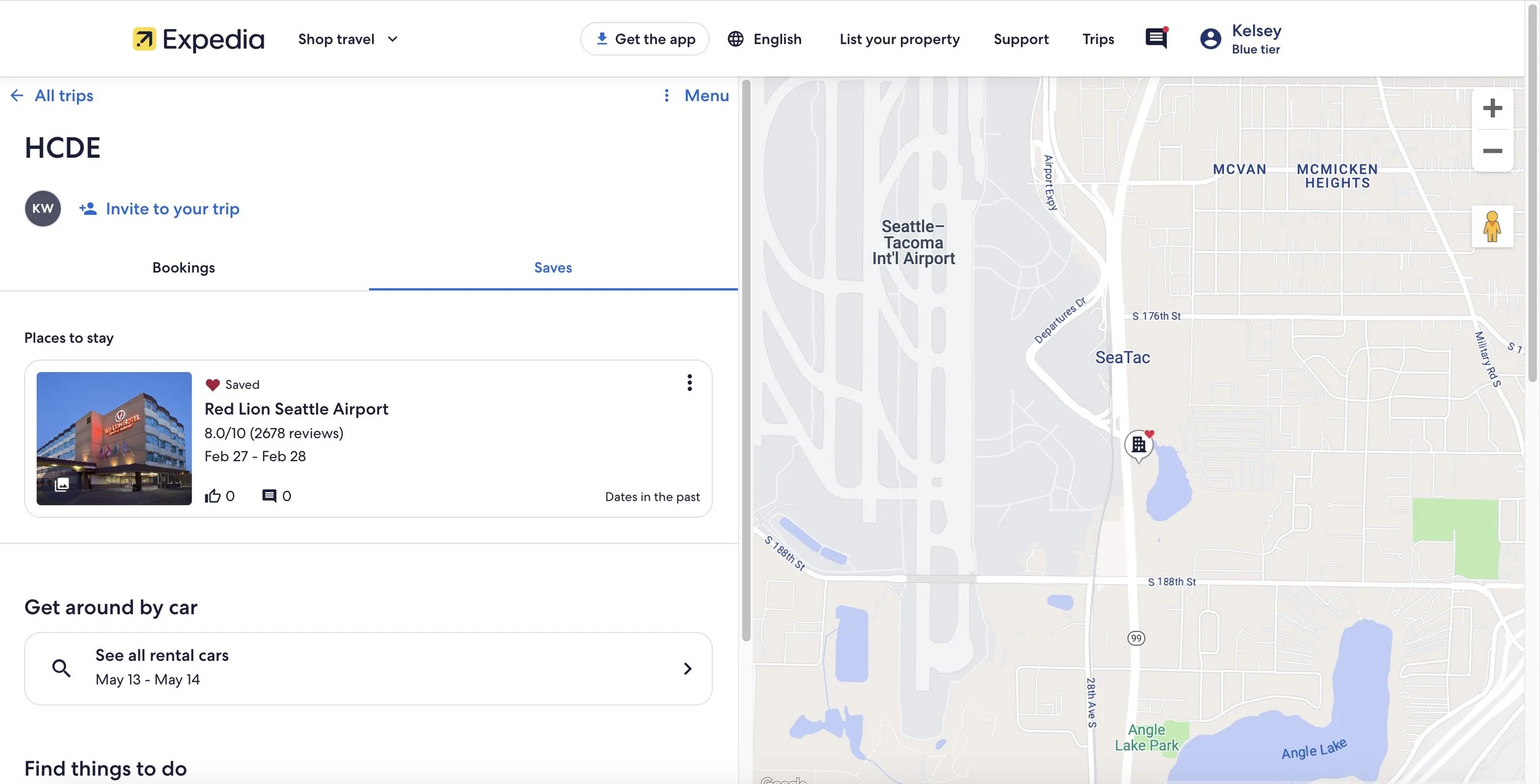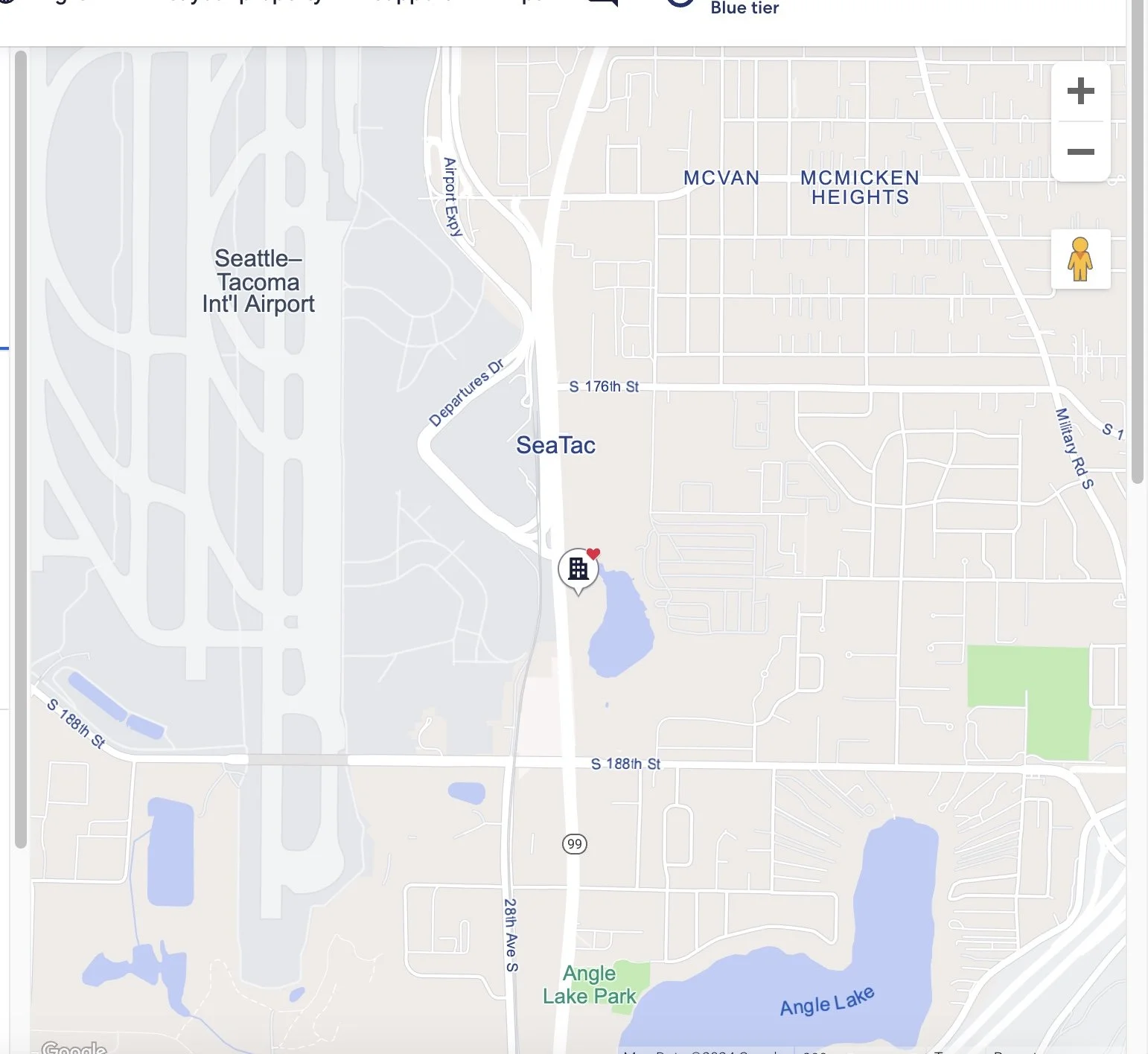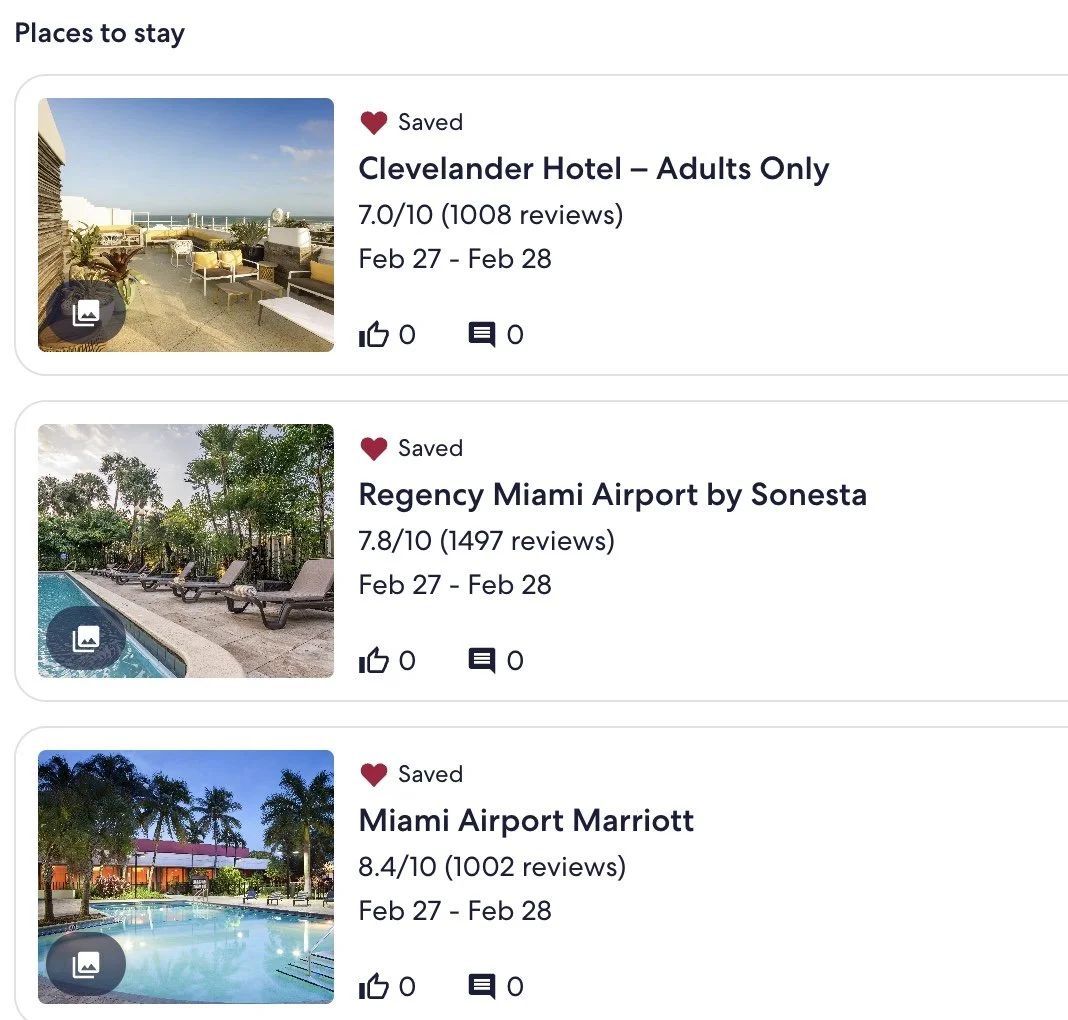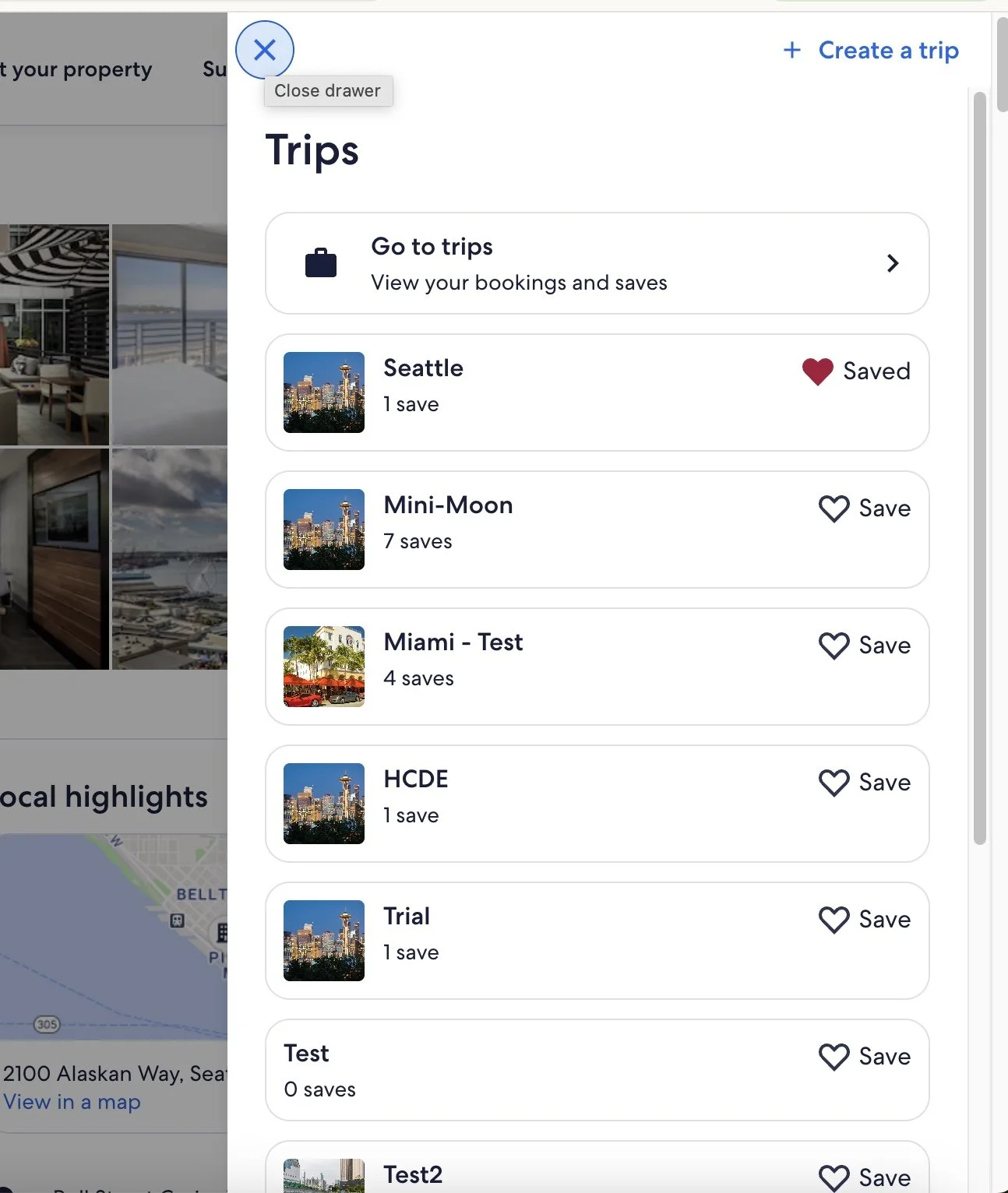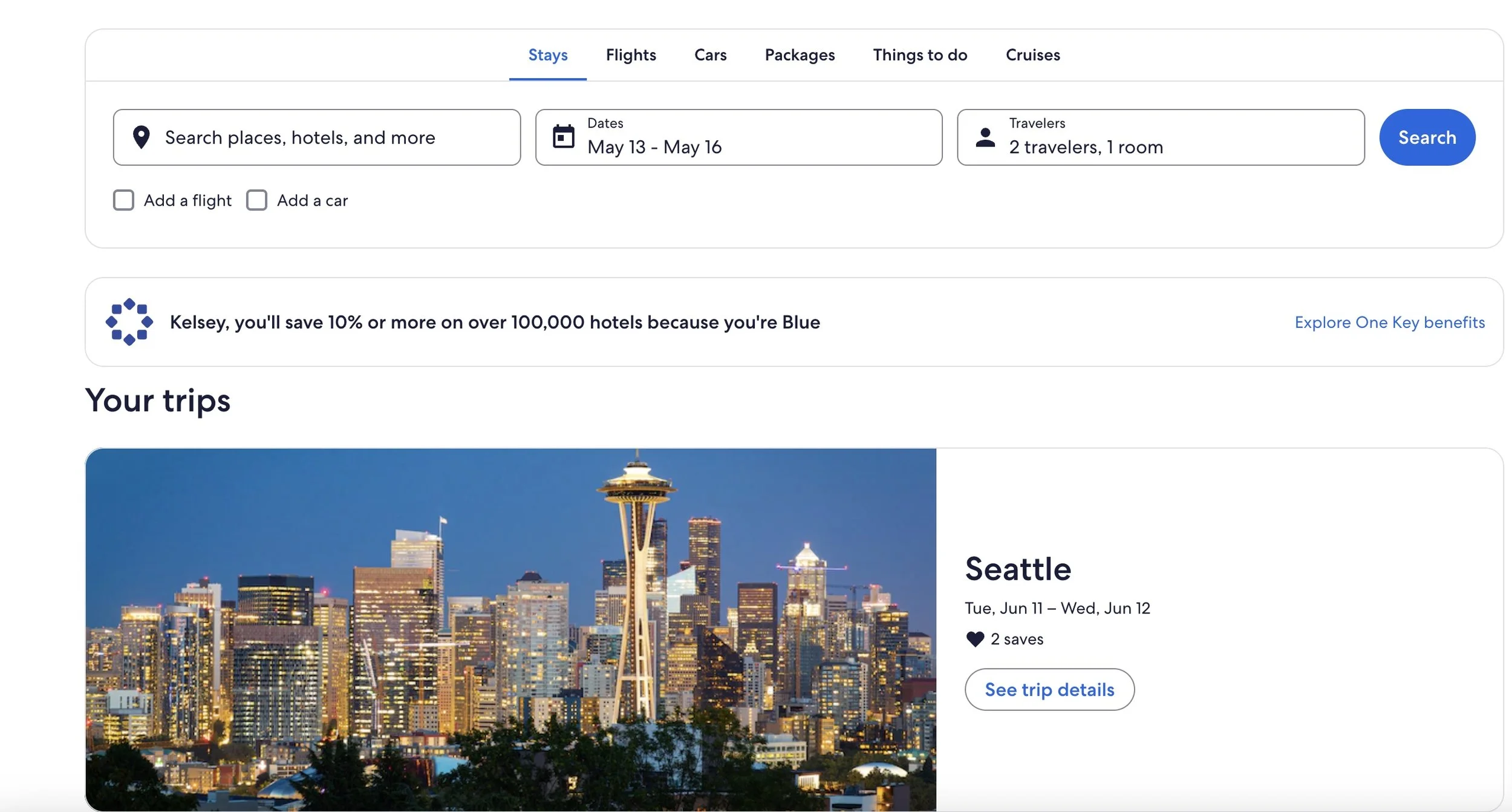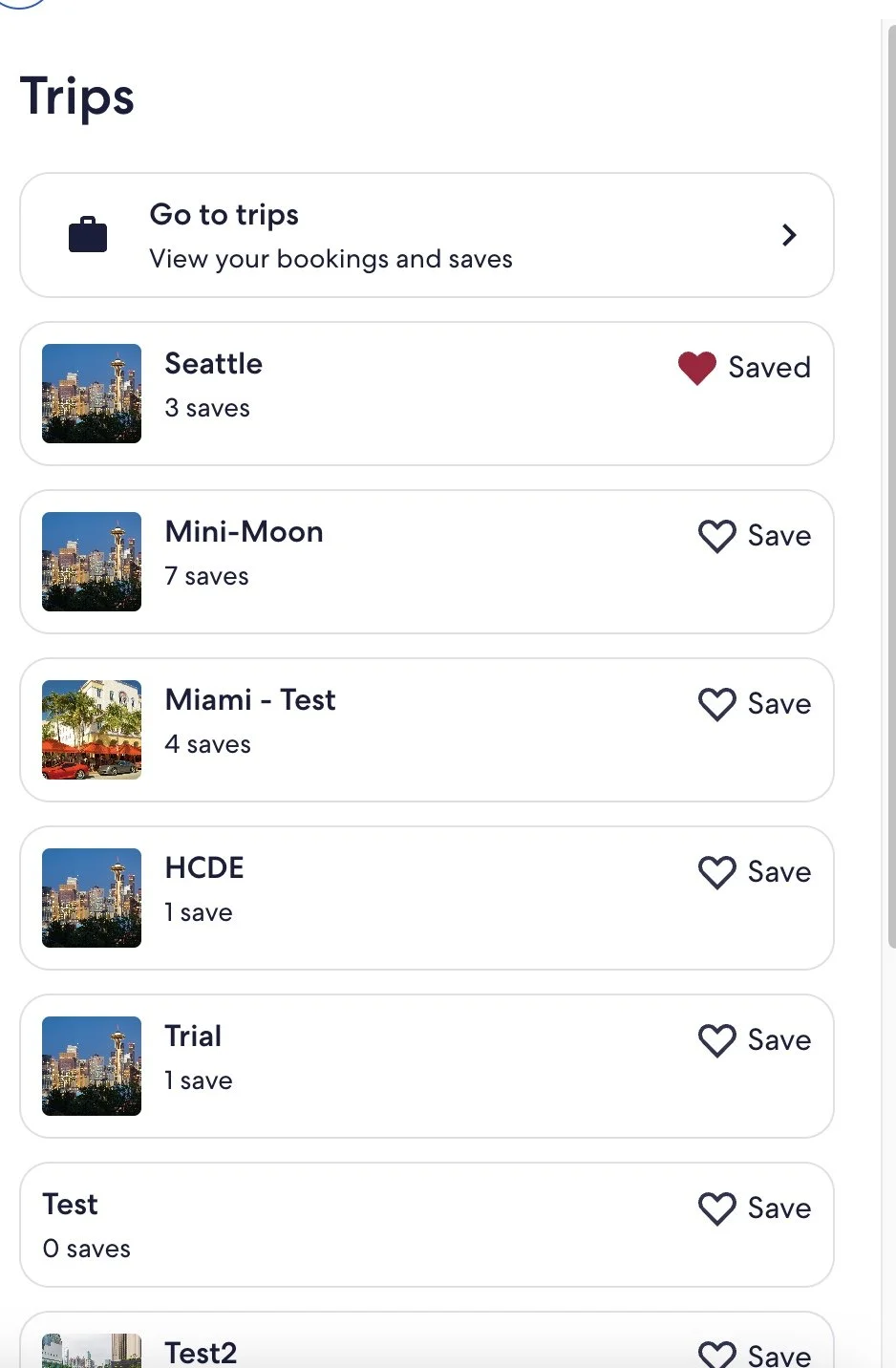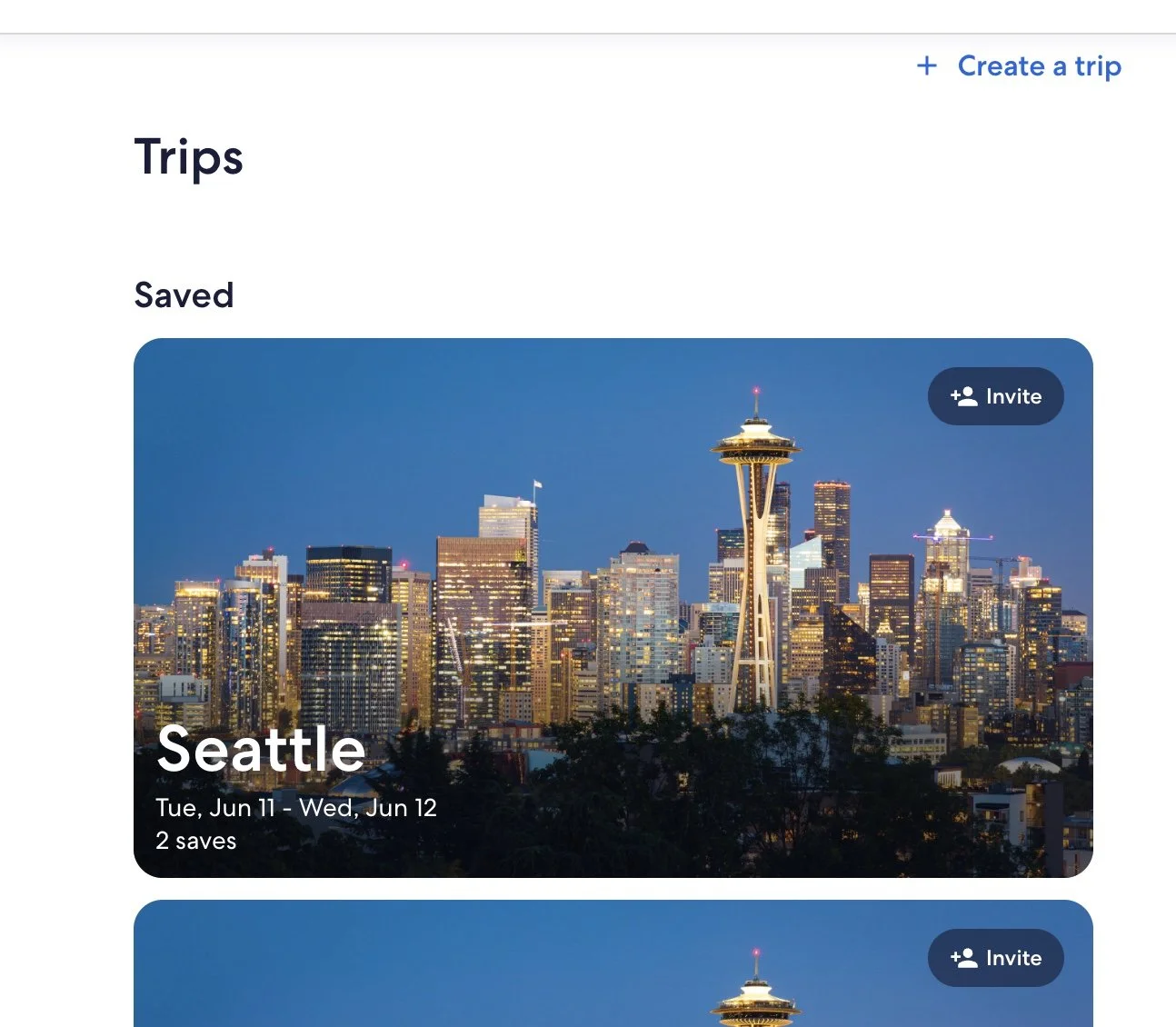Expedia
Usability lab testing to improve the “My Trips” feature at Expedia
Usability I In Person Usability Testing I Travel
Expedia & UW
Working with four other team members as a part of our UW HCDE 517 (Usability Studies) class, our team worked alongside UX sponsors at Expedia to complete in-person usability tests on their “trips” feature in Expedia’s new usability lab.
Product
Trips is a feature on Expedia’s live website designed to empower travelers to plan their full trip, manage and view their itinerary, and access their trip information in one place.
The goal of trips is to make the planning process easy, collaborative and fun; while helping travelers stay organized through every stage of their trip.
Study Goals
This study aimed to understand the effectiveness of potential trip planning on Expedia’s website, focusing on universal usability as the primary image and hedonic usability as a secondary image of usability.
Usability Focus Areas
●Identify pain points in travelers’ experience while saving and viewing a trip
●Understand travelers’ thought processes while comparing stays
●Gather travelers’ feedback and suggestions for Trips.
Methodology
Type: Usability Testing
Site: Usability Lab at Expedia’s Seattle headquarters
Environment: Test Room and Observation Room
Participant Equipment: desktop computer, mouse, keyboard, webcam, microphone, chair, participant guide, NDA, and consent form
Moderator Equipment: desktop computer, mouse, microphone, keyboard, chair, moderator guide
Observer Equipment: TV monitors displaying participant’s screen, laptop
Participants
Recruitment Source: User Research International
Scenario 2: Planning a desired trip to any destination within this year or next.
Task 4: Search for Stays
Task 5: Compare and Narrow Stays
Task 6: Save an Activity
Task 7: Review the Trip
Task 8: Interact with the map on the Trips Experience page
Task 9: Interact with the map on the search results page
Testing Procedure
Facilitation: Think-Aloud Protocol
Tasks:
Scenario 1: Planning a weekend getaway to Portland, OR
Task 1: Search for a Stay
Task 2: Save a Stay
Task 3: Find a saved Stay
Behavioral Measures:
Successful completion
Navigation Path
Frustration Click
Observation Notes
Attitudinal Data:
Attitudinal Questions/Prompts
Post-Task Questionnaires (ease of use, helpfulness and usefulness)
Post-Test Questionnaire (User-Experience Questionnaire - UEQ)
Findings
Impact:How much trouble does the usability issue affect user experience?
Frequency: # of participants encountering the problem
Persistence: How many times does a user get affected by the usability issue?
Impact
After presenting this work to the Design and Research team at Expedia our team kept up with the updates made to Expedia’s website, with a few key recommendations being incorporated into their “Trips” design, including:
Updated Map Features
From our finding that the map display does not offer helpful features to trip planners on Expedia, the team added hotel icons for the favorited hotels in the trip to the map, allowing users to explore where they will be staying on their trip.
Easier Trips Comparison & Collaboration
Trip detail cards for Stays were improved to include photos and collaboration features (like and comments) to more easily compare stays in the Trips page.
Improved association with “heart” and saved trips
We found that when saving a hotel, oftentimes the “toast” at the bottom goes unnoticed and users had trouble associating the heart with the “Trips” feature. To combat this issue, the team added a “drawer” feature when clicking on the heart to improve the user’s relationship with these two features.
Improved “Trips” navigation and Findability
After our findings that the navigation to the Trips page was confusing for users, the team added “Trips” to the Expedia homepage, and added in more clear content around navigating the the Trips page.










